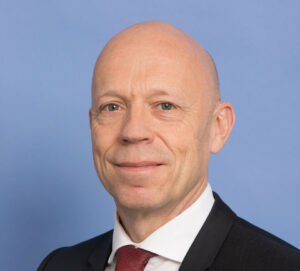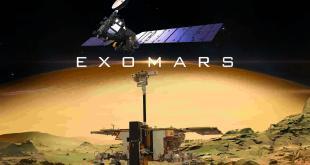
This Space Café Young Global Talents by Chiara Moenter featured Rolf Densing, ESA Director of Operations and Head of the European Operations Centre in Darmstadt, in conversation with Chiara Moenter, event coordinator and moderator at SpaceWatch.Global and Frederik Wissner, representative of ELSA Frankfurt am Main, Germany. ELSA is the renowned European Law Students Association.
“The Growing Threat of Space Debris” – is the theme of our second session. Very basic. Very relevant for SpaceWatchers and those who want to become it.
Going us from ESA headquarters in Paris, Rolf Densing sat down to talk to us about space debris – where it comes from, why we should care, and what is currently being done about it.
What is space debris actually?
Although there is no legal definition for space debris, it can be perceived as anything human-made and left behind in space, that may impact the freedom of action of others.
“So, what is debris is probably a matter of perspective. If I walked through my parents living room, so some pieces are nice, others are a bit outdated, so probably similar in space.”
Space debris impacts our activities in space. Nowadays, we have about 7000 satellites in usable orbits around Earth, and plus the debris that is left behind ever since humankind embarked upon spaceflight. We need to be aware that the usable part of space is a finite resource and if we keep adding more and more debris it will reach a point when there is no more ‘space’ and can lead to the Kessler Syndrome. The Kessler syndrome, proposed by NASA scientist Donald J. Kessler in 1978, is a scenario in which, given certain circumstances, space debris will multiply in an avalanche effect by collision among each other and make can make orbits unusable for quite a while.
What does this mean for work at ESA?
When operating European space missions and the European Space Operations Center (ESOC) there is a certain level of routine.
“Nowadays, we are at a point where we maybe have to fly a collision avoidance manoeuvre about once every two weeks.”
These collision avoidance manoeuvres can be compared to being on the road.
“If two cars hitting each other head on, you may want to do collision avoidance, one of them would have to get out of the way. And if there are two operated cars, or let’s say, two operated spacecrafts, you need to coordinate you need to talk to each other.”
Even the International Space Station (ISS) is affected by space debris.
“The ISS, which is the lighthouse of human exploration of space, is also punctured by space debris. The outer shield looks like a crater, and it is shielded from space debris smaller than one centimetre.”
… And what does it mean for our everyday lives?
“All of us, including me, use satellites, space infrastructures that are there for purpose, for example, to receive a weather report, to use your navigation system in the car, work to guide logistics companies to your mailbox. So, ironically, to deliver the Amazon packages, to your mailboxes, and so on.”
Is ESA part of the problem?
Rolf explained that ESA is part of the problem, as anyone doing activities in space, contributes to space debris. Considering the number of spacecrafts that ESA has in space their impact is lower than that of more prominent and stronger spacefaring nations.
However, ESA does have a very prominent piece of space debris in an 800 km orbit, the defunct Envisat satellite, approximately the size of a school bus!
When did we start caring?
In 1957, when Sputnik started, space debris was not much of an issue. In the 1970s, with Kessler’s paper the topic became more prominent moving from a theoretical exercise to a pressing issue.
Now with projects like Starlink, planning to launch thousands of satellites into Low Earth Orbit (LEO), things are getting more crowded, and the problems are no longer theoretical.
“Now, I must say that also Elon Musk, SpaceX and Starlink are adhering to internationally coordinated guidelines, we call them the IADC guidelines, meaning that they are cleaning their orbits within 25 years after ceasing operation. From the today’s regulatory framework, they are perfectly kosher.”
However, the IADC (Inter-Agency Space Debris Coordination) guidelines are non-binding guidelines for the mitigation of space debris.
Let’s talk about regulations!
Rolf Densing explains that since he is not a lawyer, but that there is a need for binding global legal constraints, best done through the UN. As this process takes a long time to take form so in the meantime, we would be well advised to do factual regulation and mitigation. This is what the IADC does. These guidelines were developed in 1993 and state that a satellite must clear its orbit, latest 25 years after ceasing operation. There are various ways to do this in LEO:
“You could steer it towards the atmosphere there to track it would probably disintegrate and push it outside to a graveyard orbit. And you should make sure that you have enough fuel and resources left to do such end-of-life operations. And this is unfortunately not always happening.”
How is space debris being tracked?
“So, I would say rule of thumb is that space debris down to a size of 10 centimetres can be tracked, and there are about 30,000 pieces that are currently being tracked, we know from modelling, you can estimate the number of objects that are in orbit.”
In terms of tracking satellites, cooperation is key:
“I must say we are very much relying on our American friends; I must say because without them, we would be lost. It was the US military that started tracking objects in space. For whatever reason, so people are interested in this. Unfortunately, in Europe, we have very limited capabilities of doing so. What happens very often is that we get a call from US partners that call us and tell us that this collision coming up and suggest either not to do anything or suggest doing collision avoidance.”
Over time it has become possible for the European Space Operations Centre to know the usual suspects, but as Rolf explains, it would be of great value get on equal footing and no longer be dependent on others.
And to a more positive note, what is being done?
ESA is embarking upon the first ever active debris removal mission, ClearSpace-1. This mission will be the first space mission to remove an item of debris from orbit, planned for launch in 2025. The mission is being procured as a service contract with a startup-led commercial consortium, to help establish a new market for in-orbit servicing, as well as debris removal. The mission will target the Vespa (Vega Secondary Payload Adapter) upper stage left in an approximately 800 km by 660 km altitude orbit.
… and how does this work?
“The spacecraft itself is built like an octopus. It has four tentacles, and it approaches the piece of space debris, grabs it with the tentacles, and tows it to a very low orbit aps it has the most tentacles and toes it down to a very low has on it. The compound will then disintegrate upon re-entry into the atmosphere.”
This is the first ever mission where there will be one piece of space debris less. Some other attempts in the past where less successful.
“Other attempts have been made, for example, by shooting a net at a piece of space debris and trying to fish the piece of space debris out of orbit. But now we do have not only the piece of space debris, but also the net in orbit!”
Dr. Rolf Densing also answered relevant questions from the audience.
This Space Café Young Global Talents was held on 11 May 2022.
SpaceWatch.Global is a Europe-based digital magazine and portal for those interested in space and the far-reaching impact of the space sector.





